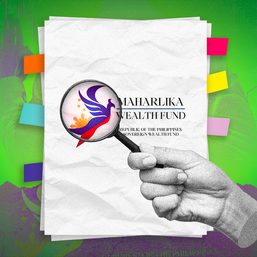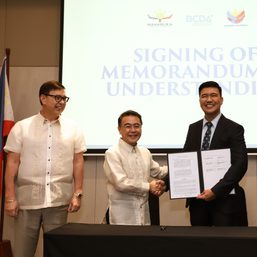SUMMARY
This is AI generated summarization, which may have errors. For context, always refer to the full article.
![[In This Economy] Looking back at the Philippine economy in 2023](https://www.rappler.com/tachyon/2023/12/TL-2023-ph-economy-dec-29-2023.jpg)
In retrospect, 2023 was pretty eventful for the Philippine economy. Here are some of the highlights.
Taming inflation
On the bright side, inflation has abated. After reaching a 14-year high of 8.7% in January, inflation has gone down to 4.1% in November. That’s just a hairline above the government’s upper 4% target. Still, the average from January to November was still quite high at 6.2%. And lower inflation doesn’t mean lower prices.
Figure 1.
Inflation went down largely because of declines in food prices. But in August and September, there was an uptick of food prices, particularly rice. This prompted the Marcos administration to impose price ceilings on rice.
But as predicted by Econ 101, this ill-advised policy quickly led to a shortage of good quality rice and large losses for thousands of rice retailers. When a finance undersecretary posted a supply and demand graph about this, she was unceremoniously sacked. Who knew supply and demand could become a symbol of resistance against bad policies?
In response to inflation, Marcos also promised to go after cartels in rice and other commodities like sugar. But inflation went down by itself without any cartel being punished (we don’t even know how many there are, exactly).
BSP’s rate hikes
Another factor that helped lower inflation is the successive interest rate hikes imposed by the Bangko Sentral ng Pilipinas (BSP). From 2022, the BSP raised its “policy rate” by a total of 4.50 percentage points, the largest jump in recent history. Much of this happened in 2022, but the hikes continued in 2023.
The BSP’s objective has been to discourage borrowing, temper demand throughout the economy, and abate inflation. This seems to have paid off, albeit with a lag and albeit a resulting economic slowdown in key sectors, including our largest growth source: consumption by private households.
Figure 2.
Whether the BSP rate hikes (which continued until October) were the best response or not to inflation attracted some debate. Some say this is an overreaction, because inflation was largely due to supply and not demand, and that the rate hikes unnecessarily took a toll on growth.
Others say the hikes were well-timed to manage people’s expectations of inflation (because runaway expectations can lead to higher actual inflation, as in a self-fulfilling prophecy). In any case, this year showed us how tricky it is to fight inflation in the short-run.
Too many trips, too few investments
Investments slowed down significantly in 2023. From January to September, foreign direct investments (FDIs) dropped by 16% from 2022 to 2023. This, despite President Marcos’ multiple foreign trips (which “nearly doubled” from 2022) and his constant exhortations to the global business community to invest in the Philippines (starting with the massive junket that was the January Davos trip).
The shortage of investments is masked by the Marcos administration with propaganda. Said the Department of Trade and Industry recently, Marcos’ trips attracted nearly P4 trillion in investments so far. But a close look at the data will show that 91% of that are just pledges – investment agreements both signed and yet unsigned, and those still on the drawing board.
I wrote in October that the factors that could be turning off investors include slower growth, the uneven response to inflation, and policy uncertainty. Lack of infrastructure and high energy costs are also major turnoffs. These need to be fixed first before we can expect a boom in investments.
Speaking of investments, in mid-December, Marcos also created a new cabinet post: the Special Assistant to the President for Investment and Economic Affairs (SAPIEA). This new “super economic manager,” as some people are calling it, is tasked to oversee the current crop of economic managers. Marcos also appointed to this post Frederick Go, previously the president and CEO of Robinsons Land. This shakeup will lead to massive changes in the way economic management is done. One more thing to watch out for in 2024.
Maharlika fund
After much hype, Marcos signed in July (in time for his second State of the Nation Address) the law creating his pet project, the Maharlika Investment Fund. This, despite warnings (including a discussion paper written by myself and 20 other colleagues at the University of the Philippines School of Economics) that such a pseudo-sovereign wealth fund is “still beyond repair” and a major threat to the public coffers.
Indeed, some of the ill effects are already coming to fruition. State-owned banks now lacking capital have sought regulatory relief from the BSP. Foreign analysts are also beginning to raise red flags.
In November, Marcos suspended Marharlika’s implementing rules and regulations, and had a team tweak it and loosen qualifications for key officials. Shortly after, Joel Consing, an experienced businessman who worked closely with billionaire tycoons before, was appointed as Maharlika’s first president and CEO. A few days before Christmas, Marcos also filled the rest of Maharlika’s board.
Will investors put money into Maharlika? And what investments will Maharlika get into? In his first presser, Consing laid out plans even without board approval yet. Let’s wait and see in 2024.
SIM registration, jeepney modernization
Some policies with economic implications were highlighted in the news. One of them is the implementation of the SIM registration law. By April 2023, people had to register their SIMs on pain of deactivation. One problem is the government’s lack of commitment: it extended the deadline because too few were registering.
More importantly, just like many well-meaning laws, the SIM registration law was beset with unintended consequences. Text scams continued to proliferate after the law was implemented, fueled by a roaring black market trade in illegal SIMs, as well as powerful networks that were able to register even unopened SIM cards. This goes to prove, once again, that bans typically don’t work in eliminating bad things (we should have learned from the inutile Duterte drug war).
Jeepney modernization was another policy that was put off this year, but this time owing to strong backlash from organizations of jeepney drivers and operators. Although most stakeholders agree with modernization in principle, the challenge is how to make the transition as just and painless as possible for drivers and operators who need to shell out significant sums to replace their old vehicles.
In March, I talked about this issue with reporter Lance Spencer Yu in Rappler’s Newsbreak Chats. Financing is at the crux of the debacle, and until this is resolved, expect continued friction in 2024.
Education crisis
Finally, in December, the latest results of the Programme for International Student Assessment (PISA) came out. Unsurprisingly, the Philippines ranked among the worst countries in terms of math, science, and reading scores. While we didn’t deteriorate, we essentially stagnated from 2018.
In a way, then, this news of the Philippines’ education crisis is no news at all. But it’s a shame and a threat to our future nonetheless. I wrote weeks ago, “Our nation’s future will continue to be bleak unless we do something substantive to stop the learning crisis in its tracks.”
Thankfully, the situation is not helpless. In a Rappler Talk interview I did in October, I talked to Noam Angrist, an economist, who conducted a large multi-country study with international colleagues, that showed even small and cheap interventions (such as calls and text messages) can work wonders to reverse the learning losses wrought by the pandemic. And some of the biggest improvements they saw were in the Philippines. All hope is not lost.
On that note, let us look forward to a Philippine economy in 2024 that’s better and kinder to us all. – Rappler.com
JC Punongbayan, PhD is an assistant professor at the UP School of Economics and the author of False Nostalgia: The Marcos “Golden Age” Myths and How to Debunk Them. JC’s views are independent of his affiliations. Follow him on Twitter (@jcpunongbayan) and Usapang Econ Podcast.
1 comment
How does this make you feel?





![[OPINYON] Tungkol sa naging viral na social media conjecture](https://www.rappler.com/tachyon/2024/07/thought-leaders-conjecture-07262024.jpg?resize=257%2C257&crop_strategy=attention)

![[EDITORIAL] Apat na taon na lang Ginoong Marcos, ‘di na puwede ang papetiks-petiks](https://www.rappler.com/tachyon/2024/07/animated-bongbong-marcos-2024-sona-day-carousel.jpg?resize=257%2C257&crop=280px%2C0px%2C720px%2C720px)

![[In This Economy] Marcos’ POGO ban is popular, but will it work?](https://www.rappler.com/tachyon/2024/07/thought-leaders-marcos-pogo-ban.jpg?resize=257%2C257&crop=255px%2C0px%2C720px%2C720px)
![[Rappler Investigates] POGOs no-go as Typhoon Carina exits](https://www.rappler.com/tachyon/2024/07/newsletter-graphics-carina-pogo.jpg?resize=257%2C257&crop=424px%2C0px%2C1080px%2C1080px)







![[Just Saying] SONA 2024: Some disturbing points](https://www.rappler.com/tachyon/2024/07/TL-marcos-sona-points-july-23-2024.jpg?resize=257%2C257&crop=335px%2C0px%2C720px%2C720px)







Based on this enlightening economic article by Prof. JC Punongbayan, we can create an Economic Scorecard for President Marcos Jr. in 2023. Let us try: 1) Taming Inflation – Passed, 2) BSP’s rate hikes – Passed, 3) Too many trips, too few investments -Failed, 4) Maharlika Fund – Failed, 5) SIM registration and jeepney modernization – Failed, 6) Education – Failed. Overall Grade – Failed.